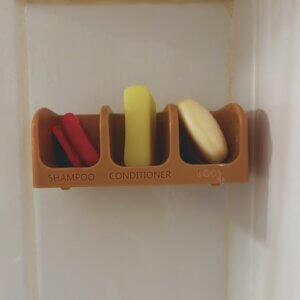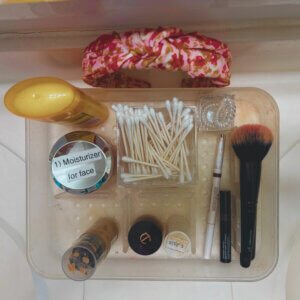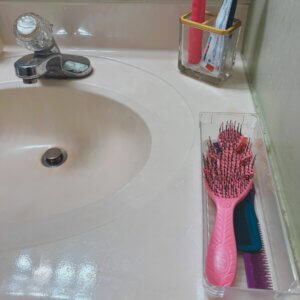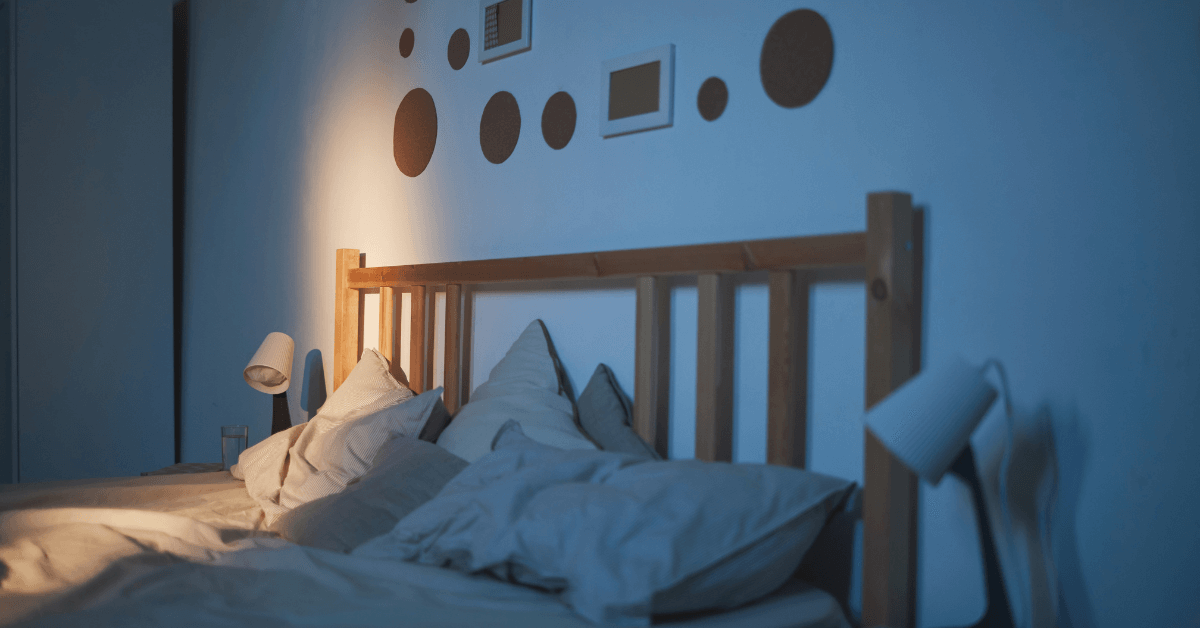



How We Organized Our Mom’s Bathroom
Sink Area
- Toothbrush and Toothpaste: To keep things tidy, we use a glass holder with individual compartments—one for the toothbrush and one for the toothpaste. (Here’s a similar style.) It’s easy to clean and ensures everything stays in its place. We also switched to an electric toothbrush (pink, of course!) because it provides a better clean and can stand upright on its own, which adds stability. Sticking to the same toothpaste brand avoids unnecessary confusion.
- Skincare and Makeup: We pared these down to the essentials in a clear cosmetic container (though the exact one we use is now out of stock): one moisturizer, foundation, blush, lipstick, and eyeshadow. Adding a space for Q-tips kept things tidy and accessible.
- Hairbrush and Comb: We now use a Wet Brush, which works beautifully to detangle wet and dry hair. It’s gentle, doesn’t pull, and feels soothing on the scalp. For styling, our Mom loves her comb, which helps her keep her part exactly how she likes it. We store both together in a container beside the sink.
- Labels: Around year five, we introduced labels like “Toothbrush,” “Moisturizer for face,” and “Blush for cheeks.” Involving our mom in choosing the label wording made it feel more personal and familiar.
- Blow Dryer: We store the blow dryer under the sink in a container. Until year seven, Mom used it independently. Now, we provide a gentle reminder, but she can still dry her hair independently.
- Family Toiletries: To keep the area uncluttered, anyone else using the bathroom stores their items under the sink out of sight.
Shower
- Shampoo Bar: We switched to Ethique shampoo and conditioner bars to accommodate Mom’s intentional hand tremor. Their bright colors make them easy to spot and eliminate the hassle of opening bottles.
- Organized Container: We keep the soap, shampoo bar, and conditioner bar in one container, in the order of use.
Practical Tips for Caregivers
- Involve Your Loved One: Collaborate on organizing their space to give them a sense of ownership.
- Simplify Choices: Offer two or three clear options, like “Would you prefer this label say Moisturizer, Face Moisturizer, or Moisturizer for Face?”
- Be Flexible: Check in regularly to see if the setup still works and adjust as their needs evolve.
- Start Small: Even tiny adjustments can make daily routines significantly easier.
With a few thoughtful changes, you can make the bathroom functional and a calming and welcoming space. Minor updates—such as switching to a gentler hairbrush or using a compartmentalized holder—can go a long way toward preserving independence and routine. These steps help create a supportive environment, making it easier for your loved one to navigate their day—and their Alzheimer’s journey—confidently and efficiently.














